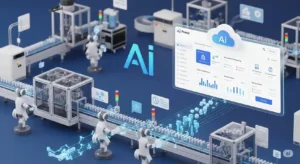Why is Supply Chain Visibility So Important?
Supply Chain Visibility is the capability to track every product and/ or goods in transit delivering a clear view of inventory activity. This impacts customer services and costs for shippers. Via inventory in motion management, proactive status updates, risk management, and limited disruptions give them full control over them both. Therefore, making supply chain management a more agile and robust process. Manufacturers and retailers can achieve this with a Supply Chain Management ERP like Microsoft Dynamics 365 for Supply Chain. The objective of supply chain visibility is to provide meaningful insights into the functionality and motion of your inventory by integrating it with the user data. Therefore, leaving you with the most efficiently optimized supply chain. Third Party Logistics and Supply Chain Management Providers like Trident Information Systems, help you reduce costs, customer service, and build a more robust supply chain. Being a multi-layer process, supply chain management does come up with certain issues like Data sharing: it becomes hard for systems to provide relevant data across all supply chain tiers, and if that is not done, problems emerge. Therefore, make sure you enable real-time visibility across all the channels. Interruptions in Supply Chain: lack of visibility can lead to losing track of the inbound supply network and therefore making it a massive challenge to keep all aspects of the supply chain in mind. Lack of demand forecasts can lead to piling up of inventory and increasing stock holding costs. Inability to filter the necessary data: the inability to filter out the necessary data can cause complications even further. Having data of no use and ignoring the essential data that can impose positive effects on ten overall supply chains will add up to supply chain difficulties. Therefore, businesses need to adopt the right strategy to attain impressive supply chain visibility. Benefits of Supply Chain Visibility The benefits of supply chain visibility led to cost reduction, minimum wastage, and increased profit. Additionally, supply chain visibility cuts costs and impacts customer services in a positive way. There are some other benefits of supply chain management. Increased Bottom Line of the Company: The data extracted from RFID (radio frequency identification) and EPCIS technology are “breadcrumbs” following a product throughout the supply chain. This visibility can throw some light on the host of data and analytics while improving the bottom line. Avoid Disruptions: knowing where a problem is about to surface gives you enough time to plan a way out. Or at least reduce the impact of disruptions. Businesses can have deep-rooted insights, strong analysis, and communication while removing the roadblocks on their way to a smooth supply chain. Boosted Agility: With the ability to peep through every supply chain aspect can help businesses to figure-out processes slowing the chain down while making the necessary changes to boost productivity and agility regardless of circumstances. Increased Speed: Business owners can make faster data-backed decisions with knowledge of every supply chain aspect. They no longer must wait for input to make their next move. Instead, they can investigate the matter right away and make fast decisions. The verdicts become more effective since connected aspects are taken into consideration. Meet Customer Demands: planning inventory needs data on current demands. Supply chains need to change and evolve according to the evolving customer demands. They can achieve this with the help of supply chain consultants or a technology designed to manage supply chains, such as D365 for Supply Chain. Negotiate Better: Visibility enables more data to manufacturers/ retailers and hence equipping them to negotiate better about a product, cost, product placement, and timing. They can master the art of negotiation knowing where to utilize the right information. How to Gain Supply Chain Visibility You can achieve supply chain visibility through various mediums. The most common among them is boosted awareness from the top of the supply chain to the bottom. There are some tips to help you gain supply chain transparency. Adopt the Best Technology Visibility is not just about having eyes on everything but accessing it anytime from anywhere. It is about ensuring that everyone in the organization can access where everything lies and what measures to take when a situation backfires. With D365 for Supply Chain, you can get visibility of moving parts within the network. From there, advanced insight can help you resolve any sort of efficiency issue. Integrate all Supply Chain Functions By integrating purchase, sales, logistics, inventory, production, transportation, and warehouse businesses can get real-time visibility on every aspect of the supply chain. D365 for Supply Chain is one of the few software that enables this facility while seamlessly visualizing the complete cycle of businesses throughout departments, business entities, and geographies. In addition, you can also analyze operations based on KPIs and optimize cash flow. Upgrade Your Human Resource Since the supply chain is a multi-faced operation, limiting your staff to just one aspect of the chain is not enough. Binding them with strict specifications can put theoretical blinds on their efficiency. Your employees are your eyes and ears; thus, they should be able to manage other aspects too. Couple them with the latest technology and relevant training. Having supply chain visibility can transform your business to the next level. You may consider the latest Supply Chain Management Software for the same. Microsoft Dynamics 365 for the supply chain is one of the best software ones could choose. If you ever require a D365 implementation partner, you may contact Trident Information Systems.
Why is Supply Chain Visibility So Important? Read More »





